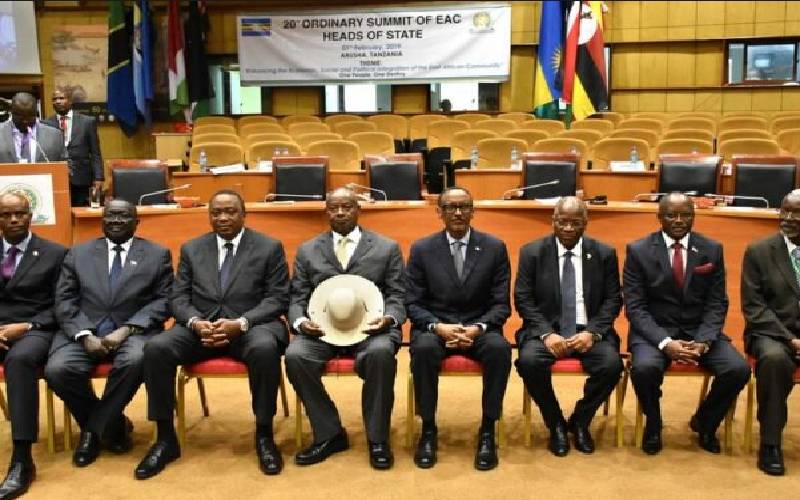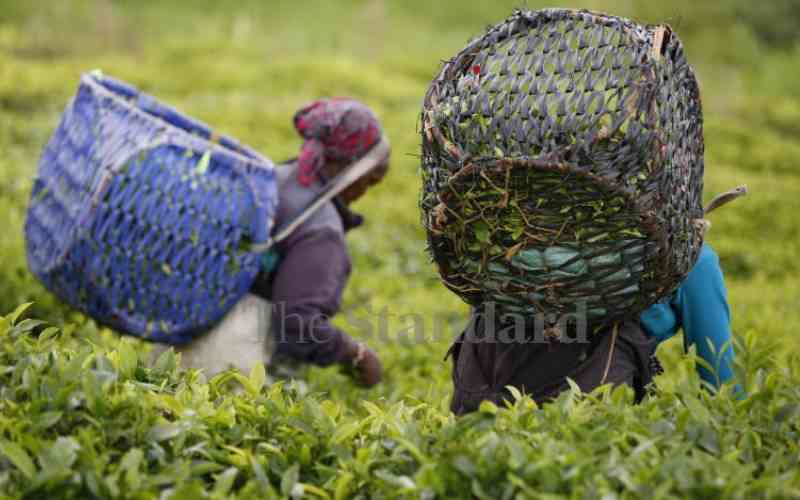 The East African Community (EAC) is a regional economic bloc comprising Burundi, Kenya, Rwanda Tanzania and Uganda. Its aim is widening and deepening the economic co-operation between the partner states. The community was created by the EAC treaty of 1999 that set into motion a series of activities aimed at establishing a fully-fledged community with an economic union, monetary union and eventually a political union.
The East African Community (EAC) is a regional economic bloc comprising Burundi, Kenya, Rwanda Tanzania and Uganda. Its aim is widening and deepening the economic co-operation between the partner states. The community was created by the EAC treaty of 1999 that set into motion a series of activities aimed at establishing a fully-fledged community with an economic union, monetary union and eventually a political union.
In the EAC treaty, Article 83(2) (e) obliges the states to “harmonise their tax policies with a view to removing tax distortions in order to bring about a more efficient allocation of resources within the community.” In line with this provision a Customs Union was established in 2005. To further this agenda, a common market protocol was implemented from July 1, 2010.
Partner states are obliged to undertake progressive harmonisation of their tax policies and laws on domestic taxes with a view to removing tax distortions in order to facilitate the free movement of goods, services, and capital and the promotion of investments within the community.
Five years since the common market protocol was implemented, not much tangible progress has been achieved in harmonisation of domestic taxes. A case in point would be excise duty. The five partner states in the EAC have quite divergent laws on excise duty. For instance, while Tanzania, Kenya, Uganda and Rwanda have an Excise Act, Burundi uses a ministerial directive to enforce excise duty.
Duty harmonisation
The second example is the disparity of excise tax structure with different partner states adopting a mixture of ad-valorem, specific and hybrid structures interchangeably. The third example is the excise duty remission schemes.
Some partner states have implemented remission schemes that deliberately favour certain excisable products made from local raw materials. The latest entrant in this scheme being Kenya which recently granted 90 per cent excise duty remission on beer made from local raw materials.
While excise duty remission may not be entirely a bad thing, the manner in which the various partner states have gone about implementing their remission schemes has been discriminative, hence not helpful to the course of excise duty harmonisation. Take for example beer manufactured in Uganda using Ugandan raw materials and then imported into Kenya. The product will be subject to the full range of excise duty in Kenya upon importation.
A similar product manufactured in Kenya using local raw materials will be entitled to 90 per cent remission. Given the fact that excise duty forms a significant portion of the price of alcohol products, the Ugandan product therefore becomes exorbitantly expensive and hence unable to compete in the local market. While someone may argue that this promotes local agriculture, it is important to remember that the spirit of the common market protocol is to identify the local market to mean the EAC.
Another example is the discriminatory structure of excise in Uganda with a four-tier specific excise structure that discriminates against imported cigarettes. Cigarettes manufactured in Kenya and exported to Uganda end up attracting as high as 36 per cent more excise duty.
Poultry products
This specific excise duty structure introduced in Uganda in the 2017 budget saw British American Tobacco (BAT) file a case at the East African Court of Justice (EACJ) seeking orders for Uganda to revise the Act on the basis that it was in violation of the EAC treaty and protocol.
The court granted an injunction in January 2018 stopping Uganda Revenue Authority (URA) from collecting the higher rates of excise on imported cigarettes. The case is still ongoing at the EACJ. In May 2019, the EACJ ruled that the actions by Uganda were in violation of the EAC treaty and protocol.
In 2017 Kenya had banned the importation of poultry due to an outbreak of Avian Influenza Virus. Uganda retaliated by banning importation of Kenyan poultry products. Upon the resolution of the outbreak, the countries agreed to allow the resumption in the trade of poultry products. Uganda however has sustained the ban on Kenyan poultry products insisting that they are protecting the local industry. It’s estimated that over 35 tonnes of Uganda poultry are imported into Kenya every week. Given the porous nature of our borders, this figure could be as high as 50 tonnes per week.
Tanzania has also imposed stringent requirements for compliance from the Tanzania Food and Drug Authority (TFDA) which many players in the poultry sector have seen as deliberate efforts to bar them from accessing the market. The most recent impact of such actions by Tanzania culminated in the 2018 burning of chicks imported from Kenya for being deemed non-compliant to the local poultry guidelines at a great loss to the importer. We therefore cannot over emphasise the vulnerability of the Kenyan poultry industry from the regional attacks.
Stay informed. Subscribe to our newsletter
Players in policy formulation in the various countries are most likely resistant to full harmonisation due to, among others, specific considerations around tax sovereignty, failure to agree on a common excise policy, fear of losing revenue, and the reluctance by the partner states to agree on the gradual convergence of excise rates due to differences in Gross Domestic Product (GDP). For full harmonisation to work, partner states will be required to cede principles of tax sovereignty in relation to excise tax.
This will require a regional holistic perspective rather than a nationalistic one in order for the region to succeed. Given the direction in which the various partner states have been moving, the harmonisation of excise duty will remain a mirage for the foreseeable future. Mutual and reciprocal recognition of the standards bodies need to be embraced across the community if the benefits of the EAC treaty and common market protocol are to be enjoyed.
Mr Murungi is a tax and policy advocacy expert. [email protected]
 The Standard Group Plc is a
multi-media organization with investments in media platforms spanning newspaper
print operations, television, radio broadcasting, digital and online services. The
Standard Group is recognized as a leading multi-media house in Kenya with a key
influence in matters of national and international interest.
The Standard Group Plc is a
multi-media organization with investments in media platforms spanning newspaper
print operations, television, radio broadcasting, digital and online services. The
Standard Group is recognized as a leading multi-media house in Kenya with a key
influence in matters of national and international interest.
 The Standard Group Plc is a
multi-media organization with investments in media platforms spanning newspaper
print operations, television, radio broadcasting, digital and online services. The
Standard Group is recognized as a leading multi-media house in Kenya with a key
influence in matters of national and international interest.
The Standard Group Plc is a
multi-media organization with investments in media platforms spanning newspaper
print operations, television, radio broadcasting, digital and online services. The
Standard Group is recognized as a leading multi-media house in Kenya with a key
influence in matters of national and international interest.

 The East African Community (EAC) is a regional economic bloc comprising Burundi, Kenya, Rwanda Tanzania and Uganda. Its aim is widening and deepening the economic co-operation between the partner states. The community was created by the EAC treaty of 1999 that set into motion a series of activities aimed at establishing a fully-fledged community with an economic union, monetary union and eventually a political union.
The East African Community (EAC) is a regional economic bloc comprising Burundi, Kenya, Rwanda Tanzania and Uganda. Its aim is widening and deepening the economic co-operation between the partner states. The community was created by the EAC treaty of 1999 that set into motion a series of activities aimed at establishing a fully-fledged community with an economic union, monetary union and eventually a political union.








